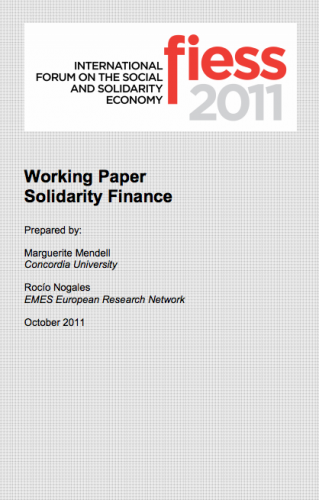Collective enterprises in the social and solidarity economy are economic actors, engaged in market activity while committed to and meeting larger societal objectives. They are now part of an ensemble of new business forms that are rapidly evolving today calling for financial innovation and enabling public policy. Often referred to as social enterprise or social purpose business to distinguish these enterprises from profit-driven private enterprises, these « hybrid » business forms are emerging in both the North and in the South, yet their needs for capital are not fully met. The diversity of their financial needs is not reflected in the rapidly growing social finance market limited largely to debt instruments. As this paper points out, social and solidarity economy enterprises require investment tools that correspond with the life-cycle of these enterprises, from pre-start up, to start up, consolidation and growth. In many cases, access to small loans prevents SSE enterprises from achieving scale, and so on.
This paper presents an overview of solidarity finance in the context of a burgeoning financial market to meet social objectives, referred to today as « social finance » and « impact investment ». Numerous illustrations are provided of innovation in this emergent market and its capacity to meet the needs for capital in collective enterprises in the North and in the South is critically evaluated. As well, the policy measures to regulate this new market and to attract potential investors are addressed. As this financial market continues to grow, it presents many challenges, not the least of which is a common understanding of what is meant by the many new concepts that are currently used.
Read Working Paper Solidarity Finance
Table of Contents
1. INTRODUCTION
2. CONTEXT: SITUATING SOLIDARITY FINANCE
2.1 Microfinance
2.2 Community-based or local finance
2.3 Solidarity finance and social banking
2.4 Socially responsible investment
3. TOWARDS IMPACT INVESTMENT
4. INNOVATIONS IN SOLIDARITY FINANCE
4.1 Quasi-equity/patient capital
4.2 Community bonds
4.3 Target populations and sectors
5. NETWORKS
6. CHALLENGES: CRITICAL FACILITATING TOOLS
6.1 Metrics
6.2 Matched bargain markets, search engines, portals, platforms, exchanges; towards a social stock exchange
7. ENABLING PUBLIC POLICY
8. CONCLUSIONS
REFERENCES





